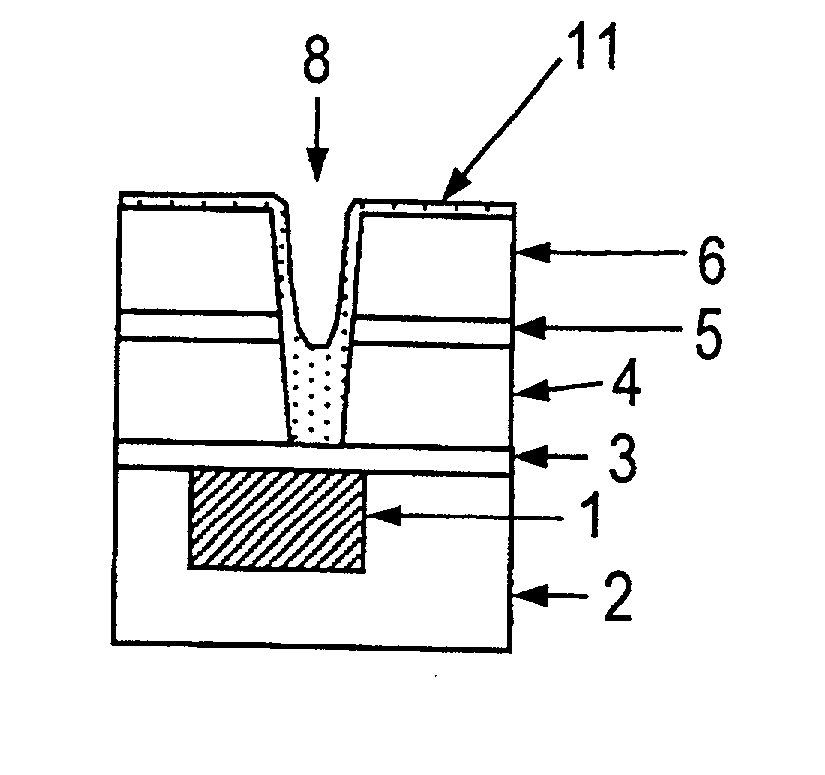Dual damascene semiconductor devices
a semiconductor device and damascene technology, applied in semiconductor devices, semiconductor/solid-state device details, electrical devices, etc., can solve the problems of reducing the delay component, and increasing the complexity of wiring circuitry
- Summary
- Abstract
- Description
- Claims
- Application Information
AI Technical Summary
Problems solved by technology
Method used
Image
Examples
Embodiment Construction
(PMA) photocrosslinking polymer Comparative Polymethylmethacrylate No 180 Example 2 (PMMA) photodegradable polymer
[0046] While an excimer lamp with a 172 nm wavelength is used in the radiation processing in this example of application, another method may be used if it is a radiation source that can cause a break in the main chain of polymer 11. For example, an electron beam, ArF excimer laser light, an F.sub.2 excimer laser light or soft X-rays may be used.
[0047] Likewise, an amount of such materials as carbon or fluorine may be mixed in with the silicon oxide film 4 or 6. In addition, the nitrided silicon film 5 may also be dispensed with.
[0048] Although polymethylmethacrylate (PMMA) is used for the polymer film 11 in this example, any polymeric material or mixture that decomposes upon exposure to radiation can be used. These polymeric materials include polyisobutylene, poly-.alpha.-methylstyrene, polyacrylate, polymethacrylate, polymethacrylamide, polyvinylidene chloride, cellulos...
PUM
 Login to View More
Login to View More Abstract
Description
Claims
Application Information
 Login to View More
Login to View More - R&D
- Intellectual Property
- Life Sciences
- Materials
- Tech Scout
- Unparalleled Data Quality
- Higher Quality Content
- 60% Fewer Hallucinations
Browse by: Latest US Patents, China's latest patents, Technical Efficacy Thesaurus, Application Domain, Technology Topic, Popular Technical Reports.
© 2025 PatSnap. All rights reserved.Legal|Privacy policy|Modern Slavery Act Transparency Statement|Sitemap|About US| Contact US: help@patsnap.com



